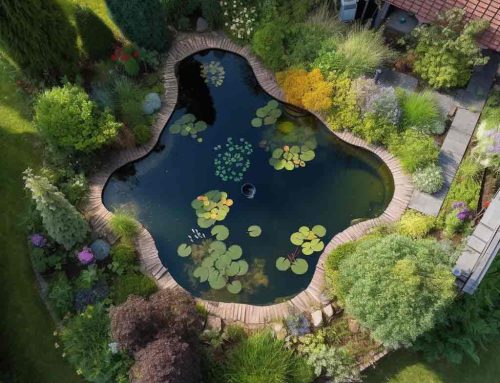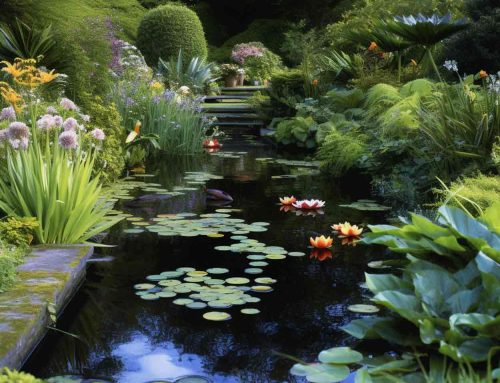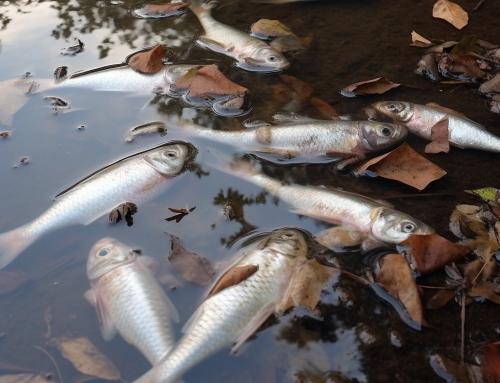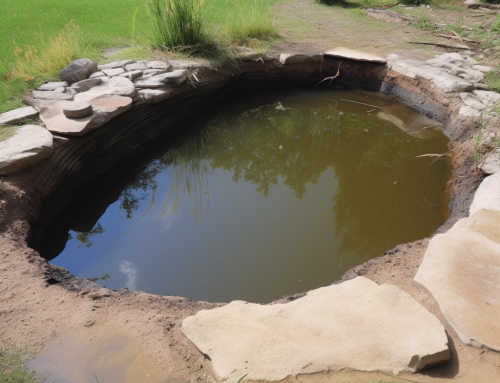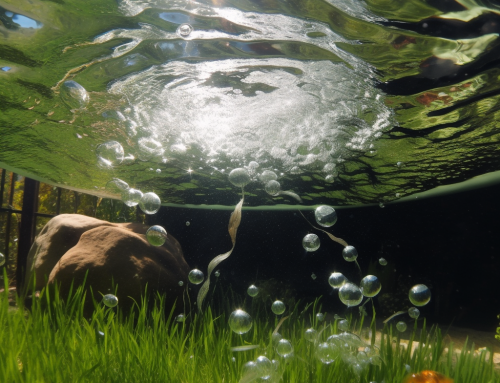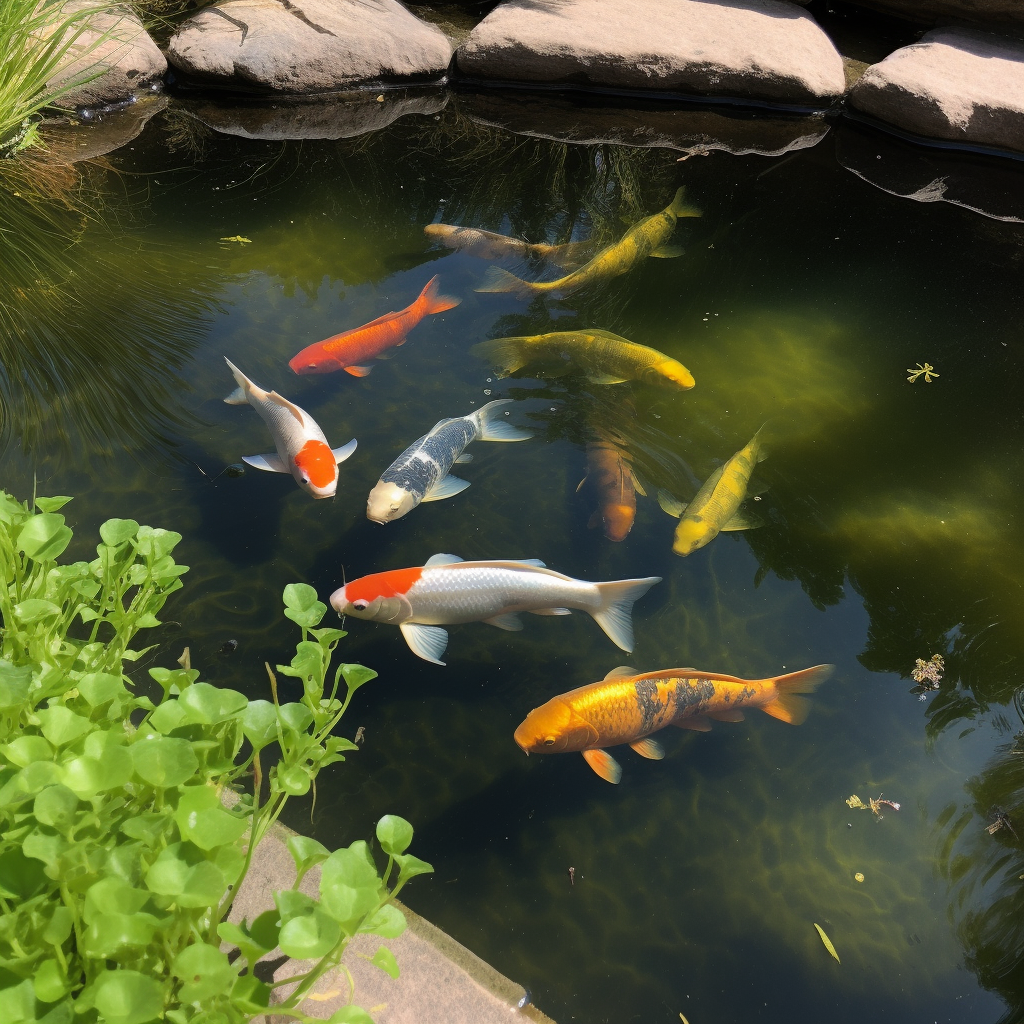
Worried About Low Oxygen in Your Pond? Look for These Signs in your Fish
In this set of questions and answers, we will explore topics related to oxygen levels in ponds and the signs of low oxygen in fish, which is one of the causes of fish dying in ponds. We will discuss ways to increase oxygen levels in a pond and the sources of oxygen in ponds. Additionally, we will address the duration for which fish can survive without oxygen in a pond. Maintaining proper oxygen levels is essential for a healthy aquatic ecosystem, and this information will be useful for anyone looking to ensure the wellbeing of their pond and its inhabitants.
How do I know if there is enough oxygen in my pond?
You can tell if your pond has enough oxygen by observing your fish. If your fish are gasping for air at the surface or around entry points of water, it may indicate a low oxygen level in the water. This is a cause for concern, and immediate attention is necessary. Another sign of low oxygen levels in fish is that they may appear to be hungry and agitated, as they activate their survival mode. To ensure your pond has enough oxygen, it is essential to monitor the water quality regularly, particularly during hot weather when oxygen levels may decrease. To increase oxygen levels in your pond, consider adding aquatic plants, an air pump or a fountain to help aerate the water.
How can I oxygenate my pond quickly?
One of the quickest and easiest ways to oxygenate a pond is by adding an air pump. An air pump is a simple device that sits at the side of the pond and pumps air through a small hose to an air stone. Bubbles generated by the air stone enter the water, and when they break the surface, oxygen is added to the water. The air pump can run continuously, or it can be set on a timer to run for specific periods of the day. Another way to oxygenate your pond is by adding a fountain or a waterfall, which increases air contact and aeration, thereby increasing the level of oxygen in the water.
Does rain increase oxygen in pond?
Rainwater can increase the oxygen level in a pond or lake. During a rainfall, the increased air contact from the falling water can result in higher and more consistent levels of oxygen in the water, which is a key component of a healthy aquatic ecosystem. In addition to rainwater, wind and waterfalls are other natural sources of aeration that can increase oxygen levels in ponds and lakes. While rainfall can increase oxygen levels in a pond, it is essential to monitor the water quality regularly to ensure that the oxygen level is sufficient for aquatic life.
What are the signs of lack of oxygen in fish?
Fish that lack oxygen may exhibit a range of signs, including laboured breathing, rapid gill movements, and gasping at the surface of the water. Gasping at the surface is one of the most common signs of low oxygen in fish, and it can appear as though the fish are hungry, although they are actually struggling to survive. If you observe these signs in your fish, it is essential to take immediate action to increase oxygen levels in the water. This can be done by adding an air pump or a fountain, increasing water movement, or by adding aquatic plants that can photosynthesise and increase oxygen levels in the water.
How do I add oxygen to my pond water?
To add oxygen to your pond water, there are several steps you can take. One option is to add an air pump to your pond, which pumps air through a hose to an air stone. This creates bubbles that enter the water and increase oxygen levels. Another option is to add a fountain or a waterfall, which increases aeration and air contact with the water, increasing oxygen levels. Aquatic plants can also help to oxygenate the water through the process of photosynthesis. To keep oxygen levels high in your pond, it is essential to monitor water quality regularly and take action if oxygen levels begin to drop.
How long can fish live without oxygen in a pond?
The length of time that fish can survive without oxygen in a pond varies depending on several factors, including the type of fish, water temperature, and the size of the pond. Koi can survive without an active oxygen supply for a couple of hours to several days, depending on the conditions. If there is no dissolved oxygen present in the water, fish will die in a matter of minutes
What kind of pumps or tech can I use to help oxygenate the water?
- Air pumps – Air pumps work by forcing air through a tube and into the water. The air creates bubbles that rise to the surface and burst, releasing oxygen into the water. These pumps are easy to install and are often used in conjunction with airstones or air diffusers to create more bubbles and increase oxygenation.
- Waterfall and fountain pumps – These pumps are designed to create aeration by circulating water and creating movement in the water’s surface. As water flows over the waterfall or fountain, it picks up oxygen from the air and releases it into the water. These pumps are often used for their aesthetic value as well as their ability to add oxygen to the pond.
- Diffusers – Diffusers are small, porous stones or plates that attach to an air pump and release tiny bubbles into the water. These bubbles increase the surface area of the water, which helps to increase the oxygen exchange between the air and water. Diffusers are a popular choice for ponds with a deeper depth or where water movement is limited.
- Surface aerators – Surface aerators are devices that sit on the water’s surface and use a motor to create a circular motion in the water. This motion increases the water’s oxygen level by increasing the surface area and creating more contact with the air. These devices are ideal for ponds with a depth of less than six feet.
- Water garden and pond kits – These kits often include a combination of pumps, filters, and other equipment that can help maintain healthy oxygen levels in a pond. They are designed for small to medium-sized ponds and can be a convenient way to ensure that a pond has adequate oxygenation. Some kits include features such as waterfalls, fountains, or diffusers, while others may include aeration pumps that sit on the pond’s bottom.
What natural things can I do to aerate the pond water?
- Add aquatic plants – Plants, especially those with floating leaves, such as water lilies, can help to oxygenate a pond. During photosynthesis, oxygenating pond plants release oxygen into the water, which can help to boost oxygen levels. Additionally, plants can help to absorb excess nutrients in the water, which can reduce the likelihood of oxygen depletion caused by organic matter buildup.
- Reduce nutrient load – Excessive nutrients in a pond can lead to an overgrowth of algae, which can deplete oxygen levels in the water. To reduce nutrient load, avoid overfeeding fish, limit the use of fertilisers around the pond, and keep the surrounding area free of debris.
- Increase circulation – Increasing water movement within a pond can help to aerate the water and increase oxygen levels. This can be achieved through the use of aeration devices, waterfalls, or fountains.
- Control algae growth – Algae can rapidly deplete oxygen levels in a pond, especially during the nighttime when it consumes oxygen. Controlling algae growth with algaecides or through manual removal can help to prevent oxygen depletion.
- Avoid overstocking – Overstocking a pond with fish can lead to oxygen depletion. To avoid this, maintain a healthy fish population that is appropriate for the size of the pond.
It’s important to note that natural methods of oxygenation may not always be sufficient, especially in ponds with high fish populations or heavy organic matter buildup. In these cases, supplemental oxygenation with mechanical devices may be necessary.
Summary
- Low oxygen levels in ponds can be observed by gasping fish at the water’s surface, which may also appear hungry.
- To oxygenate a pond quickly, air pumps or fountains can be added to create bubbles and increase water aeration.
- Rainfall, wind, and waterfalls are natural sources of aeration and can increase oxygen levels in ponds and lakes.
- The signs of low oxygen in fish include laboured breathing, rapid gill movements, and gasping at the water’s surface.
- Oxygen can be added to pond water through air pumps, fountains, and photosynthesis from aquatic plants.
- Fish can survive without oxygen for a varying period, depending on factors such as the type of fish, water temperature, and pond size.
- Monitoring oxygen levels and taking action when necessary is essential for maintaining a healthy aquatic ecosystem.

